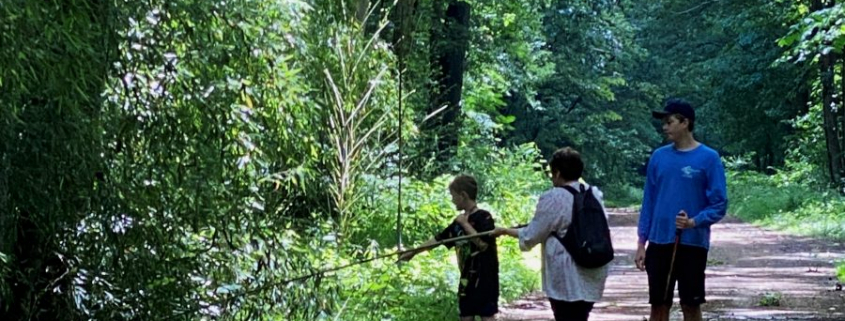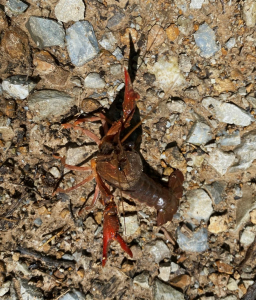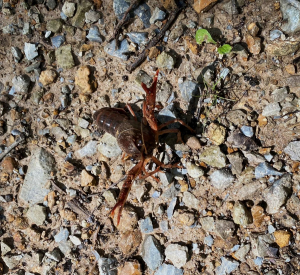Early Summer Visit to a Riparian Forest: Wheeler NWR
May 27, 2022, my wife Judy and I, along with our two Alabama grandsons Jack and Sam, visited the Blackwell Swamp area of nearby Wheeler National Wildlife Refuge. We stopped to look at the January 1, 2022 tornado swath; hiked along HGH Road at the northern edge of an extensive riparian forest; and viewed the open water breadth of Blackwell Swamp.
Back to the January 1, 2022 Tornado Swath
Here’s my May 5, 2022 Post on the aftermath of the tornado: https://stevejonesgbh.com/2022/05/04/aftermath-of-january-1-2022-tornado-at-wheeler-national-wildlife-refuge/
I photographed this view mid-March from the north margin of the tornado swath looking due south. The raw scene, absent trees and debris the Refuge crews removed from the road, suggests total destruction. I wrote extensively in that Post about Nature’s alternate perspective…that the tornado prompts renewal, enabling regeneration and encouraging new forest regrowth. A seeming act of devastation, when viewed through Nature’s lens, is a force of renewal. The tornado did not wipe out a forest, but instead paused its development. Without a land use change (not likely on a National Wildlife Refuge), the forest will prevail far beyond the life and demise of individual trees.
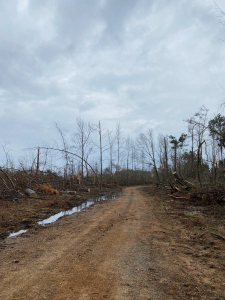
Just two months beyond my mid-March visit, the regrowth…the renwal…dominates the scene! Green prevails. Even the sky, coincidentally, brightens the outlook. John Muir knew Nature’s healing power intimately:
Earth has no sorrow that earth can not heal.
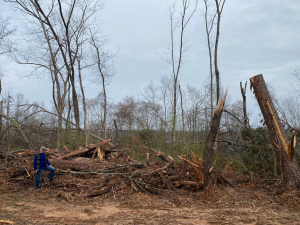
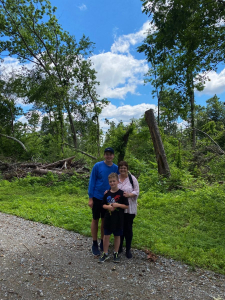
This shattered bur oak, evidencing the violent winds, caught my eye and my lens in March. Sprouting leaves from adventitious buds along the trunk now reveal the snag’s species.
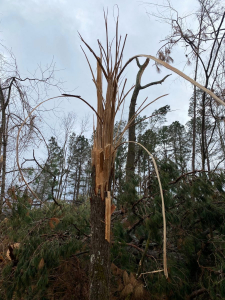
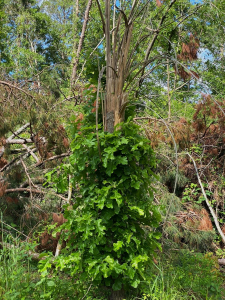
During the period (mid-1970s) when I purchased standing timber for a hardwood sawmill, I had to be a student of hardwood log defects. I could not pay veneer prices for a lower quality tree. From an online wood defects reference:
Adventitious buds are subnormal buds found at points along the stem. They arise from latent or dormant buds in the leaf axils of the young stem and persist for an indefinite number of years within the cortical-cambial zone. They retain connection back to the pith by means of a stele, a bundle of water-conducting tissues also known as a bud trace. These buds can be activated at any time during the life of the tree in response to various stimuli; such a response leads to the development of an epicormic branch.
So, while adventitiou buds can be a lumber defect, they serve an important purpose. The shattered bur oak is actively developing epicormic branches that will afford the tree a chance to compete in the new canopy. Nature doesn’t give a hoot about potential hardwood log defects. The long term evolutionary advantage goes to an individual (and its species) able to effectively rebound from disturbance.
HGH Road Adjoining a Riparian Forest
HGH Road runs east/west from its juncture with Jolly B Road just west of Blackwell Swamp. The view here is to the east. A rich riparian forest, predominantly hardwood, lies to the right, extending nearly unbroken to the Tennessee River. Pine mixes in on the uplands. The “uplands” may be no more than 5-10-feet higher than the saturated lowlands. Streams and seasonally flooded forest create species and soil variability within the forest. Sam, Judy, and Jack are pausing to examine a roadside patch of invasive bamboo.
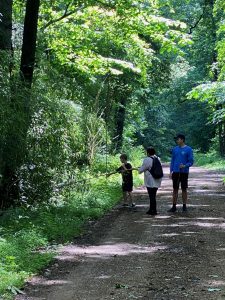
I normally wander the forest off-road, where I deal with biting insects, face-draping spider webs, poison ivy, the presence of snake, briars, and other such inconveniences. I know better than to subject beloved family members to the riparian forest during the deep growing season.
Critters
As we entered the Refuge, I alerted the boys that we had a good chance of seeing one or more of the following: turtle, snake, frog, and more. Our mile hike did not disappoint!
We stopped and exited the SUV when we encountered a common slider crossing the road in front of us. What stronger vote of grandson reaction than Sam kneeling by the turtle signaling a thumbs-up!
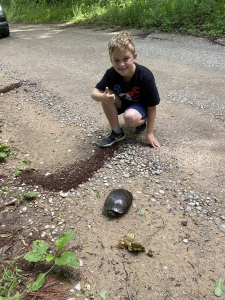
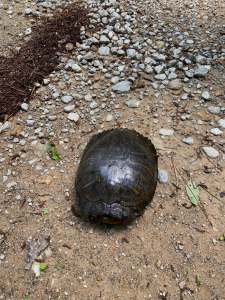
Within a few hundred feet of where we eventually parked the vehicle we saw what was for me a first-of-its-kind critter situation. This garter snake with a hapless leopard frog generated first a shriek (A SNAKE!!!), then expressions of wonder and awe, and finally sympathy for the amphibian. Notice that I have no image of Sam kneeling by the duo smiling with his thumbs-up signal!
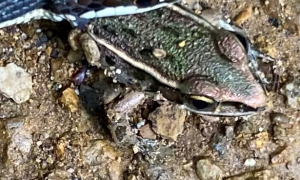
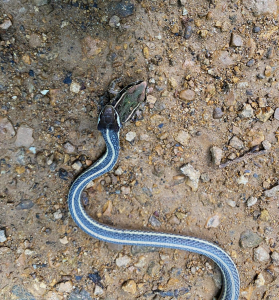
Another first for me, a red swamp crayfish seemed to fiercely guard his section of road, like a troll with his bridge. We observed from a respectable distance, worked our way around him, and continued westward. He had exited the roadway when we later returned en route to the gravel parking area.
Sam spotted a red-legged purseweb spider crossing the road. Another fierce-appearing creature. He gave no evidence of concern for us, continuing in straight-line from one side to the other.
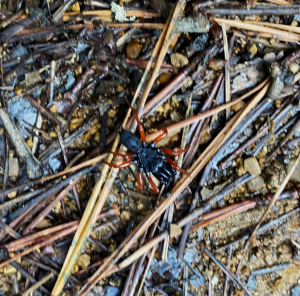
We found a clump of moss with a false Caesar’s mushroom protruding, and a millipede enjoying the fungal delicacy (but only from a milipede’s perspective).
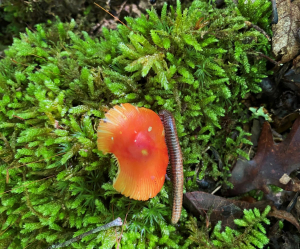
Woodland critters abound within the forest, where I spend most of my foraging and exploring bushwhacking. However, thick undergrowth limits my vision and my not-so-silent passage gives forest floor life a chance to shelter in-place out of view. The HGH Road hike proved perfect for maximum discovery.
Flowers
I’ll transition to flower encounters with a plant holding to an animal’s name: lizard’s tail (other names include water-dragon, dragon’s tail, swamp root. The plant’s inflorescence droops as below, turning brown after flowering, resembling its namesake lizard’s tail.
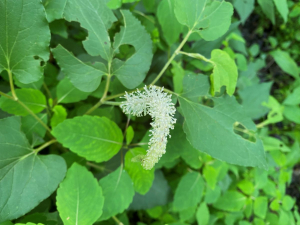
What could be more attractive than this redwing milkweed?! From a US Forest Service online publication:
This milkweed like most milkweeds produces copious amounts of nectar and is an important pollinator plant. The flowers have a sweet odor. Bees, wasps, butterflies, flies, and ants can be seen on its flowers. Redring milk is not an important food plant for monarch butterfly caterpillars, although they can be occasionally be found on the plants. The plant tends to be in low densities and in some shade and this may make it harder for monarchs to find it.
Redring milkweed is a species of moist to dry shaded roadsides, woodland, savanna and open forest. It tends to grow in light to moderate shade, but tolerates full sun. It is known from Texas north through Oklahoma and Missouri to Illinois and east to the Atlantic from Connecticut to Florida.
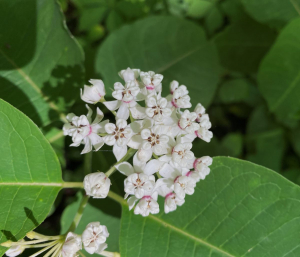
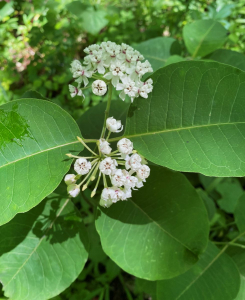
From an NC State University online Extension reference:
Carolina ruellia or Wild-petunia, is very common in North Carolina, found in lawns and woodlands. This native wildflower is so common that, despite its beauty, it is sometimes considered a lawn weed. This unbranched perennial can grow to 2 to 3 feet tall. Its leaves are light green and tend to have a crowded appearance. Its purple flowers bloom in spring, summer, and fall. The unstalked flowers are in axillary clusters of three to four and usually only one or two are open on any given day. Even though wild petunia’s flowers only last for a day, its long flowering period more than compensates. It seeds readily.
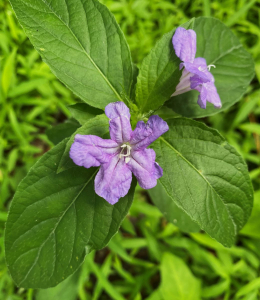
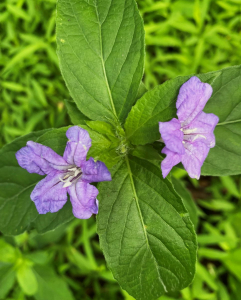
I am now a big fan of both redwing milkweed and Carolina ruellia — such exquisite beauties!
However, I don’t want my biases to detract from this next flower, with which I have a lifelong affinity. Most amateur naturalists know black-eyed Susan, summer-common across the range of my own eastern US wanderings.
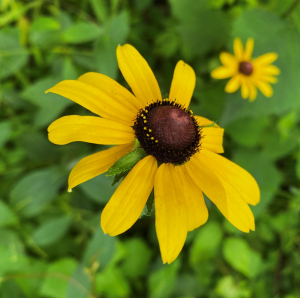
My iNaturalist Ap identified this roadside flower as thickleaf phlox. Once again from an NC State University online Extension reference:
Carolina Phlox, as the name suggests, is a flower native to the southeastern US. Its native habitat includes deciduous woods, forest edges, clearings, and roadsides. Its upright growth habit may reach 2-3 feet, blooming mostly during the hottest part of the summer in full sun, although it may rebloom intermittently until frost.
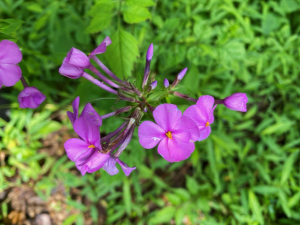
The road-edge flowering jubilee continues at the Refuge through the summer. Here is my Post from a roadside floral ramble on a nearby gravel road mid-August 2020: https://stevejonesgbh.com/2020/10/07/mid-summer-life-flourish-along-a-wheeler-nwr-gravel-road/
The seasons of Nature’s beauty, magic, wonder, and awe extends year-round!
Overlooking Blackwell Swamp
We shifted our attention briefly to Blackwell Swamp. A roadside canoe launch provides a quarter-mile wide view across the swamp’s southern end. That’s lizard’s tail in the foreground, extensive flats of water lily beyond, and an edge of riparian forest on the far side.
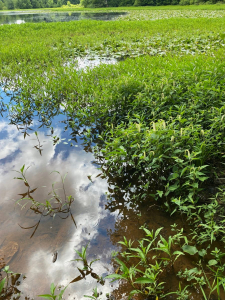
I often see numerous ducks, great blue herons, great egrets, and other birds at this vista. A barred owl greeted me from his perch above the landing on a prior visit.

Green, blue, and white — the striking colors of Nature across our moist temperate wildlands of most of the eastern US. Although some people find our north Alabama climate too humid and rainy, I thrive in this region receiving annual rainfall at 55″. Water is Life!
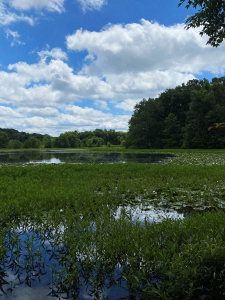
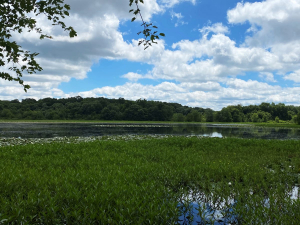
I am never disappointed by my ventures into our 35,000-acre Wheeler National Wildlife Refuge, whether riparian forest bushwhacking in search of forest fantasies or edible mushrooms, hiking gravel roadways with family, or marveling at the annual mid-winter migratory cranes and diverse waterfowl at the visitor center observation building.
Thoughts and Reflections
I offer these observations:
- The Refuge, and any wild place, reveals new secrets every time we visit.
- There is magic in Nature’s mundane objects, whether insects, flowers, or a hungry snake grasping a hapless frog.
- I find deep healing and renewal in my wildness wanderings and their inspired wonderings!
Inhale and absorb Nature’s elixir. May Nature Inspire, Inform, and Reward you!
Note: All blog post images created & photographed by Stephen B. Jones unless otherwise noted. Please circulate images with photo credit: “©2022 Steve Jones, Great Blue Heron LLC. All Rights Reserved.”
Another Note: If you came to this post via a Facebook posting or by an another route, please sign up now (no cost… no obligation) to receive my Blog Post email alerts: http://eepurl.com/cKLJdL
And a Third: I am available for Nature-Inspired Speaking, Writing, and Consulting — contact me at steve.jones.0524@gmail.com
Reminder of my Personal and Professional Purpose, Passion, and Cause
If only more of us viewed our precious environment through the filters I employ. If only my mission and vision could be multiplied untold orders of magnitude:
Mission: Employ writing and speaking to educate, inspire, and enable readers and listeners to understand, appreciate, and enjoy Nature… and accept and practice Earth Stewardship.
Vision:
- People of all ages will pay greater attention to and engage more regularly with Nature… and will accept and practice informed and responsible Earth Stewardship.
- They will see their relationship to our natural world with new eyes… and will understand more clearly their Earth home.
Tagline/Motto: Steve (Great Blue Heron) encourages and seeks a better tomorrow through Nature-Inspired Living!
Steve’s Three Books
I wrote my books Nature Based Leadership (2016), Nature-Inspired Learning and Leading (2017), and Weaned Seals and Snowy Summits: Stories of Passion for Place and Everyday Nature (2019; co-authored with Dr. Jennifer Wilhoit) to encourage all citizens to recognize and appreciate that every lesson for living, learning, serving, and leading is either written indelibly in or is powerfully inspired by Nature.
I began writing books and Posts for several reasons:
- I love hiking and exploring in Nature
- I see images I want to (and do) capture with my trusty iPhone camera
- I enjoy explaining those images — an educator at heart
- I don’t play golf!
- I actually do love writing — it’s the hobby I never needed when my career consumed me
- Judy suggested my writing is in large measure my legacy to our two kids, our five grandkids, and all the unborn generations beyond
- And finally, perhaps my books and Blogs could reach beyond family and touch a few other lives… sow some seeds for the future

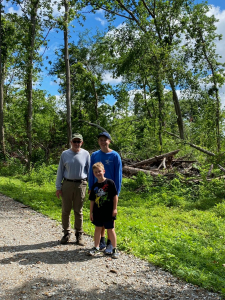
All three of my books (Nature Based Leadership; Nature-Inspired Learning and Leading; Weaned Seals and Snowy Summits) present compilations of personal experiences expressing my (and co-author Dr. Wilhoit for Weaned Seals and Snowy Summits) deep passion for Nature. All three books offer observations and reflections on my relationship to the natural world… and the broader implications for society. Order any and all from your local indie bookstore, or find them on IndieBound or other online sources such as Amazon and LifeRich.

